This is where the common names of plants can really get you in trouble. The past couple of weeks, I have been asked about some of the tall bushes that have all kinds of flowers on them. What are they? Is the most common question, followed by: Are they hard to grow? and Where do you get them?
The plant in question here is the Rose of Sharon, If you lived in Britain or Australia they would think you are talking about Hypericum calycinum, which is an evergreen flowering shrub native to Southeast Europe and Southwest Asia. We know it here as St. John's Wort.
It looks like this:
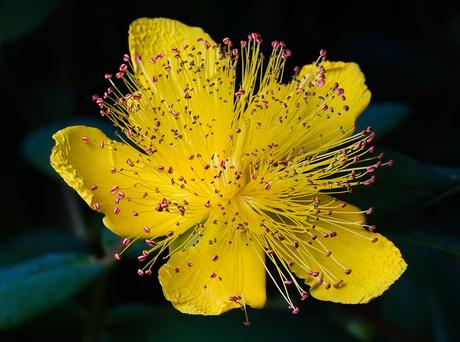
I know there are a bunch of people that just had a cow! That is NOT a Rose of Sharon!! It is if you live in Australia or Britain.
Here in the good old USA, the Rose of Sharon (Hibiscus syriacus) looks like this:
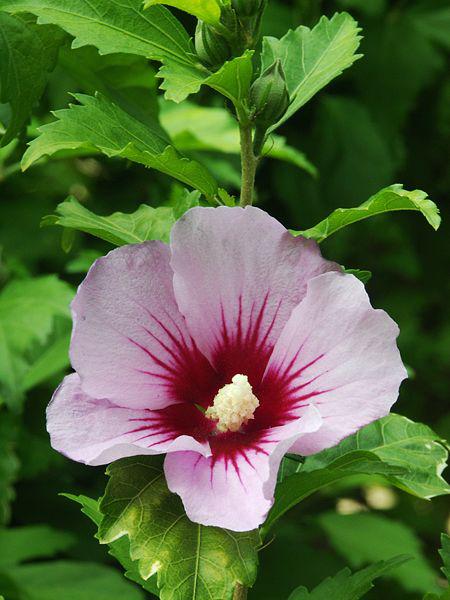
THIS is the plant everybody has been asking me about.
See how common names can get very confusing? Depending on who you ask, or where they are from may determine what kind of plant you get. That is why I try to talk in botanical names whenever possible. It also goes by other common names such as: Althea Rose, Syrian Rose, and Shrubby Althea. There are many other plants out there with an identity crisis, but I digress.
The Rose of Sharon (Hibiscus syriacus) is a deciduous (loses its leaves) flowering shrub native to East Asia. It is the national flower of South Korea and was mentioned in an article produced 1,400 years ago. So this flower has been around for quite sometime.
It is an upright plant that produces colorful, cup-shaped flowers in Summer and Fall. They can range from 2-4 inches across.
The colors are almost infinite in number, including blue, pink, red, lavender, purple, white, and many of these in combinations depending on the variety.
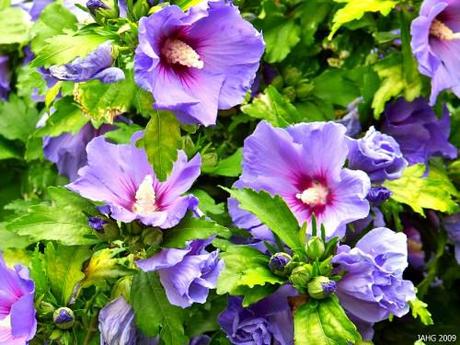
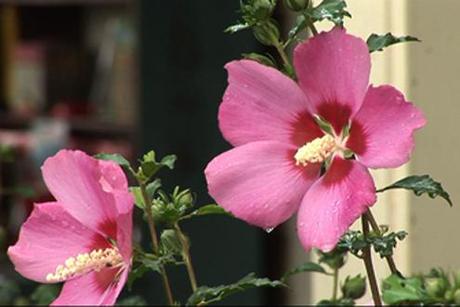
Some have flowers that strongly resemble the familiar hibiscus; as you can see above. There are others that have small double petals that appear rose-like or are almost like a peony.
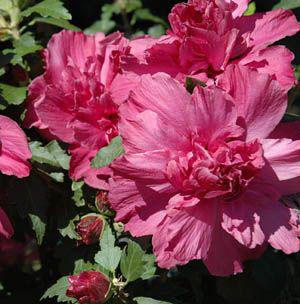
The Rose of Sharon grows well in USDA hardiness zones 5B through 9A. It will attain a pretty decent size. Averaging from 8-10 feet tall and 6-8 feet wide. It is best to grow Rose of Sharon in full sun, it can tolerate up to part shade. It prefers moist, well drained soil that contains lots of organic matter, though, it is able to tolerate a wide variety of soil and drought conditions. The plant may survive extreme conditions, but the buds may drop off if the plant is watered too much or too little, or if too much fertilizer is applied. When it comes to feeding, fertilize your Rose of Sharon just before the flowering period. Apply a balanced granular fertilizer according to the package directions.
If you want bigger blooms, in the Winter or early Spring, prune off last seasons growth. It will flower on the new growth. This is also a good time to be propagating them. It is easily propagated by hardwood cuttings that are 4 - 6 inches long taken in the Winter and planted about 1-1.5 inches deep in a mixture of coarse sand and peat moss. Stick the cut ends in some rooting hormone and keep these warm, moist and humid. You can also use softwood cuttings in the Spring, using the same method as above.
Aphids and Spider Mites can be a real nuisance, However, one of the biggest problems that Rose of Sharon faces is the Japanese Beetle.
If you have leaves that look like this, then you have a Japanese Beetle problem.
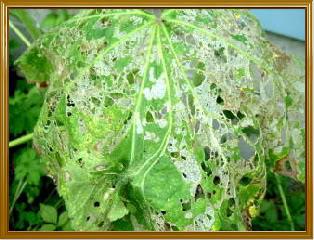
My mother just cringed when she saw these pictures, she is very accustomed to this problem. Her favorite way to deal with it, walk around the yard with a bucket of soapy water and drown the little varmints.
You can also use a product called Milky Spore. It is an organic approach to ridding your yard of the grubs that turn into the beetles. One word of caution, you will need to get pretty much your entire neighborhood involved in this. Just because your yard is protected, they live next door, and the pupating beetles will fly over for a feast.
Diseases that you need to be aware of include leaf spot, blight, and cankers. These can be controlled with fungicides or proper placement of plants. Make sure that there is good air circulation between them and they are planted in the proper place.
As you can imagine, with a history as long as this beautiful flower, there are some interesting tidbits surrounding it, especially in the world of music.
"Rose of Sharon" is a song by Robert Hunter (From the Grateful Dead) which he released on his solo album Tiger Rose.
"Rose of Sharon" is a song sung by Joan Baez on the album Day After Tomorrow.
Judah Robertson has an album entitled "Rose of Sharon".
The Rose of Sharon is referenced in the Bob Dylan song "Caribbean Wind."
Rose of Sharon is also the official flower of Phi Beta Chi, a national Lutheran-based Greek social letter sorority.
There are many, many other references to the Rose of Sharon from Biblical mentions to Novels and Poetry. I just find the flower very pretty and I hope you do too.
Just remember, a Rose by any other name...might just be something completely different!
Happy Growing!
Darren

